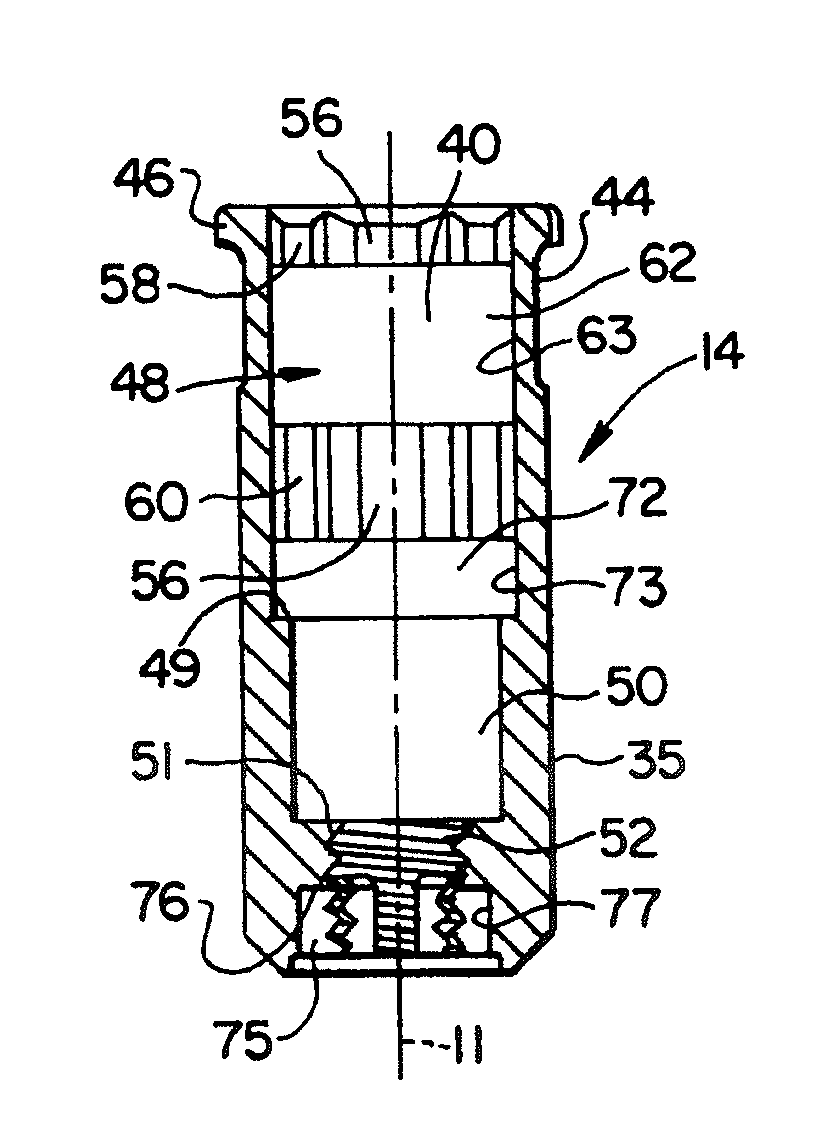Impression post and temporary abutment and method of making dental restoration
a dental restoration and impression post technology, applied in the field of dental implantogy, can solve the problems of dental surgeons finding that an unusually high torque is required in order to implant the device, implant damage, various forms of damage, etc., and achieves the effect of facilitating the torque limitation, facilitating the construction of a properly fitting device, and being easy to shape or modify
- Summary
- Abstract
- Description
- Claims
- Application Information
AI Technical Summary
Benefits of technology
Problems solved by technology
Method used
Image
Examples
Embodiment Construction
[0016]There is provided herein an apparatus and system for installing an implant into a prepared surgical site and limiting the applied torque to prevent the implant from being damaged. The system generally includes an implant, a drive tool for supplying rotational force to the implant, and a fixture mount that is disposed between and aligned with the implant and the drive tool, and that transmits the rotational force applied by the drive tool to the implant. Also disclosed is a method for installing the implant with the fixture mount and, thereafter, employing the fixture mount as an impression post and abutment for a temporary prosthesis.
[0017]According to a preferred embodiment of the invention, at least one end of the fixture mount includes an end portion that releasably engages the adjacent end of either the drive tool or the implant, as the case may be, and that is adapted to receive the applied torque and transmit it to the implant so long as the torque does not exceed a pred...
PUM
 Login to View More
Login to View More Abstract
Description
Claims
Application Information
 Login to View More
Login to View More - R&D
- Intellectual Property
- Life Sciences
- Materials
- Tech Scout
- Unparalleled Data Quality
- Higher Quality Content
- 60% Fewer Hallucinations
Browse by: Latest US Patents, China's latest patents, Technical Efficacy Thesaurus, Application Domain, Technology Topic, Popular Technical Reports.
© 2025 PatSnap. All rights reserved.Legal|Privacy policy|Modern Slavery Act Transparency Statement|Sitemap|About US| Contact US: help@patsnap.com



